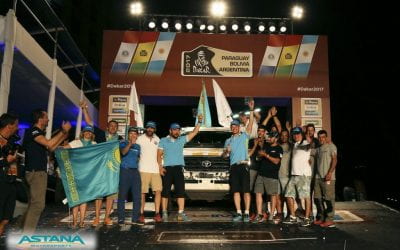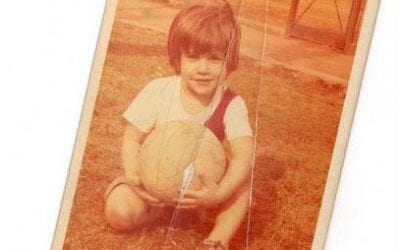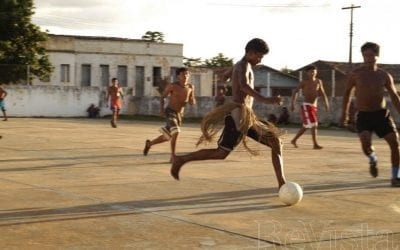Speaking of Baseball
A Trip to Vuelta Abajo (Cuba)
Hopefully, some day this injustice will be remedied, and the stadium in his hometown of Consolación del Sur or even one of the small baseball diamonds for children that are scattered over the island will be named after him so that kids will be inspired to imitate his brilliant career. As Osaba told me, Tony Oliva does wish to live and die in Cuba, the country where he was born, and where he is, as an irony of destiny, an illustrious unknown person.
Una excursión a vueltabajo
(Para Hablar de Pelota)
By Félix Julio Alfonso López
Dice un viejo refrán que no hay nada mejor que el béisbol, que no sea hablar de béisbol. Y con ese propósito nos fuimos el joven periodista deportivo Yasel Porto, el veterano investigador sobre la pelota decimonónica Martín Socarrás y quien escribe a la provincia más occidental de Cuba, Pinar del Río. Allí nos esperaba otro conocedor y devoto de los temas peloteros, el fraterno Juan Antonio Martínez de Osaba, autor entre otros libros de las biografías de algunos de los más destacados beisbolistas pinareños del último medio siglo: el jardinero Luis Giraldo Casanova, el tercera base Omar Linares y el lanzador derecho Pedro Luis Lazo. Como es conocido, Casanova fue un jugador muy completo, apodado por el genial cronista Bobby Salamanca, “El señor pelotero”; el “Niño” Linares fue una superestrella desde que era apenas un adolescente y todavía ostenta el record de promedio de bateo en las series nacionales cubanas (368 en 20 temporadas), y el gigante Lazo encabeza a los pitchers en número de victorias con 257.
Durante todo el trayecto conversamos acerca de la próxima Serie Nacional, un torneo en franca decadencia desde el punto de vista de la calidad de su juego, y donde para colmo este año habrá un equipo más, al dividirse la antigua provincia de La Habana en dos nuevos conjuntos: Artemisa y Mayabeque, al tiempo que sobrevive el anacrónico y débil Metropolitanos, una novena que funciona como sucursal de la franquicia de Industriales, sin ninguna aspiración posible a discutir alguna vez el campeonato. En el caso de los equipos ex habaneros, se observa un peligroso desequilibrio en ambos, pues uno (Artemisa) reúne un excelente cuerpo de pitcheo y una débil ofensiva, mientras que sucede exactamente lo contrario en el caso de los Huracanes de Mayabeque. A lo anterior debemos sumar que este año se jugará con una pelota menos “viva”, la Mizuno 200, y se subirá el montículo del pitcher, teóricamente para proteger a los lanzadores de las furias de los bateadores.
También hablamos, por supuesto, de los más recientes descalabros del equipo nacional en el Campeonato Mundial y los Juegos Panamericanos, donde se perdió frente a equipos que están muy lejos de tener el historial y la tradición de Cuba, como es el caso de Holanda, y se ganó con dificultad a rivales desconocidos como Alemania. Todo ello relacionado, obviamente, con deficiencias de nuestros jugadores en su pensamiento técnico-táctico, una pésima rotación del pitcheo, la inexistencia en el área de los lanzadores del sistema abridor/preparador/cerrador, ya de larga data en las Grandes Ligas y otros circuitos de pelota internacionales, la falta de roce internacional de nuestros peloteros, la imposibilidad de que conozcan un nivel más alto del deporte insertándose en otras federaciones del área, como las dos ligas de México, la de Venezuela, República Dominicana y otras extra continentales como las de Corea del Sur y Japón.
Por último, ya en las cercanías de Pinar, conversamos acerca de otro peligro para el béisbol cubano, fomentado desde los medios de comunicación. Nos referimos a la saturación de transmisiones de fútbol profesional europeo y latinoamericano, en comparación con ninguna de béisbol profesional de Grandes ligas o de otros torneos. Ello ha dado como resultado que los niños y jóvenes han privilegiado al fútbol entre sus diversiones favoritas, relegando al juego de pelota, y creando una afición artificial a los grandes clubes europeos como el Real Madrid o el Barcelona, el Milán o el Manchester United, los cuales no tienen ninguna relación con el balompié cubano ni con la tradición cultural de la isla, afincada en el beisbol desde la segunda mitad del siglo XIX.
Ya en La Perla de Occidente, y luego de un suculento ágape en las riberas de un hermoso lago, participamos en la peña de Osaba, en el acogedor espacio del centro “Hermanos Loynaz”, no lejos de donde el gran pintor Pedro Pablo Oliva tiene su estudio-taller. Dijimos más o menos las mismas cosas que ya veníamos tratando por el camino, y escuchamos con atención las lúcidas y persuasivas palabras del laureado mentor vueltabajero Jorge Fuentes, uno de los hombres que más títulos ha ganado en la pelota cubana, dueño de un carisma y una sensibilidad especial para tratar sobre nuestro pasatiempo nacional. Jorge hizo la anécdota de cuando fueron recibidos en su casa por el jonronero Hank Aaron, durante los Juegos Olímpicos de Atlanta, y las palabras de admiración y deferencia que el gran slugger negro tuvo para con los peloteros cubanos.
Por supuesto, no pudo faltar la mención a Tony Oliva, por estos días de visita en su tierra natal, triple campeón de bateo en las Mayores con los Mellizos de Minnesota y candidato al Salón de la Fama de Cooperstown, algo que merece desde hace tiempo por derecho propio. Tony es sin duda uno de los más grandes peloteros cubanos de todos los tiempos, y a sus cualidades como jugador une una proverbial sencillez, aun cuando la mayoría de los cubanos ignora su sobresaliente trayectoria deportiva.
Ojalá algún día esa injusticia sea reparada, y lleve el nombre de Tony el estadio de su natal Consolación del Sur, o cualquier de los pequeños diamantes para niños que existen por toda la Isla, que se inspirarán en él para imitar su brillante carrera. Por cierto, según me confesó Osaba, Tony Oliva quisiera quedarse a vivir y a morir en Cuba, el país donde nació y donde es, por una ironía del destino, un ilustre desconocido.
Spring 2012, Volume XI, Number 3
Félix Julio Alfonso López es un historiador cubano que escribe frecuentemente sobre béisbol.
Félix Julio Alfonso López es un historiador cubano que escribe frecuentemente sobre béisbol.
Related Articles
Sports Diplomacy: A Dominican Adventure
I tried not to have my personal interests in sports and languages collide, but some things just can’t be avoided…
Sentimental Soccer
English + Español
Between Wednesday, June 22, and Sunday, June 26, 2011, River Plate, the team I’ve been a fan of my entire life, was relegated to the second division of Argentina’s soccer league. The depth of…
Sports: Editor’s Letter
I hate sports. As a little girl, I was always stuck on the softball outfield—the practical way of including a chubby, clumsy kid in the mandatory physical education class. I’d rather have been inside reading my favorite poet Edna St. Vincent Millay…





